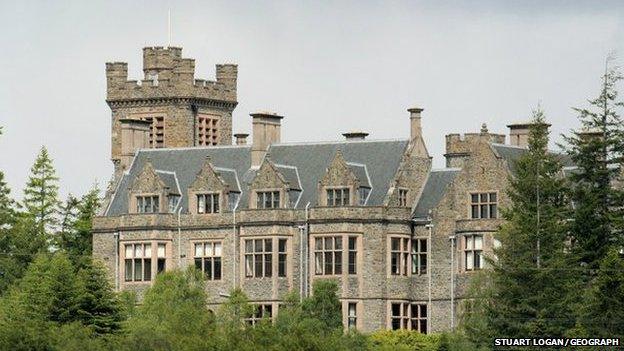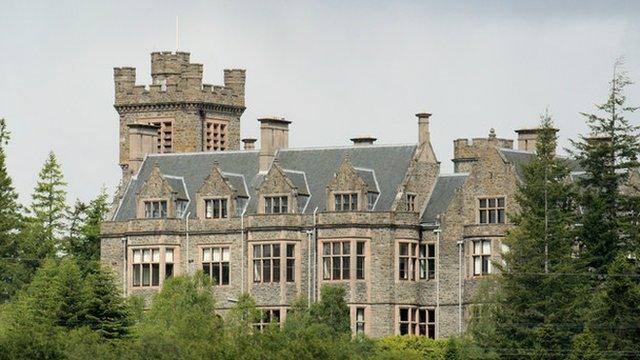Buyers interested in Sutherland's Carbisdale Castle
- Published

Carbisdale Castle was built in the 1900s
The sale of one of Scotland's most spectacular youth hostels has attracted potential buyers.
Carbisdale Castle, a former stately home dubbed Castle of Spite because of the part it played in a historic family feud, was shut three years ago.
The Scottish Youth Hostels Association (SYHA) had to close it as a hostel because of rising repair costs.
The SYHA said the selling agents have received notes of interest and these were being considered.
The castle, which overlooks the Kyle of Sutherland, was shut as a hostel after suffering frost damage.
Historic Scotland lists the castle and its entrance gates as category B, which means they are structures of regional importance.
The Dowager Duchess of Sutherland had Carbisdale Castle built between 1907 and 1917 following the death of her husband, George Granville William Sutherland-Leveson-Gower, the Third Duke of Sutherland.
Lady Mary was the duke's second wife and after he died she became embroiled in a legal dispute over his will with her step son, the fourth Duke of Sutherland.
When the row was settled the duchess used her inheritance to have Carbisdale constructed.
Female ghost
According to geographical encyclopaedia, The Gazetteer of Scotland, the property became known as the Castle of Spite.
Its clock tower only has three faces with none that could be seen by the new duke as he passed by in his private train on his way to Dunrobin Castle, near Golspie, his family's property in Sutherland.
It is also said that he would have the blinds of his carriage shut so he did not have to look at Carbisdale.
The castle was bought by a Scots-Norwegian family in 1933 and was used as a refuge for the Norwegian royal family during World War II.
The gazetteer adds that the castle is haunted by a female ghost called Betty.
- Published25 March 2013
